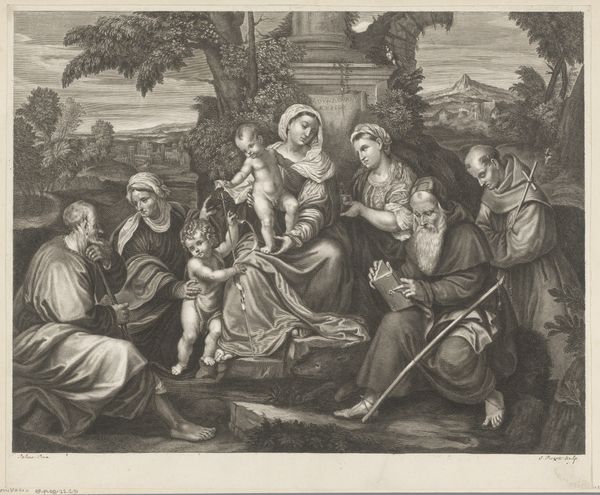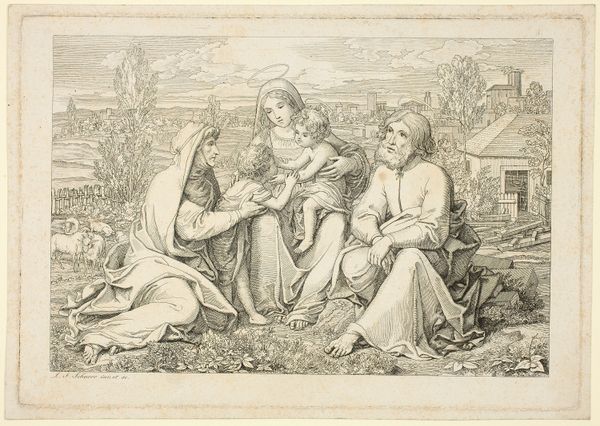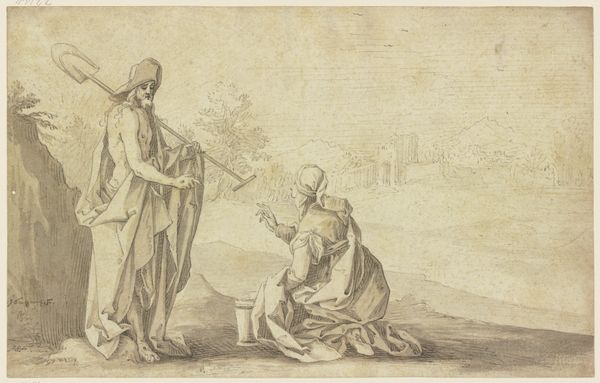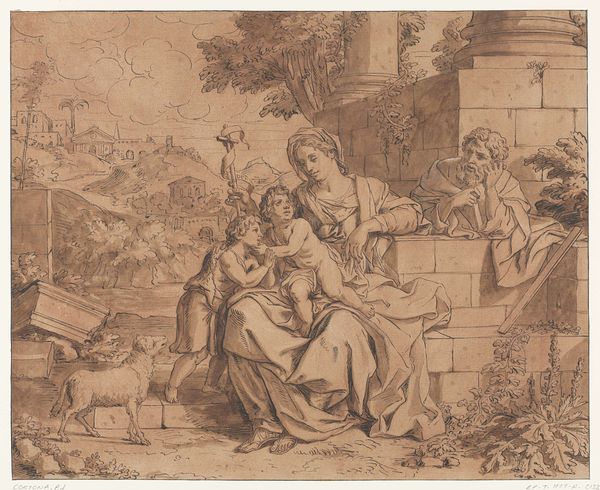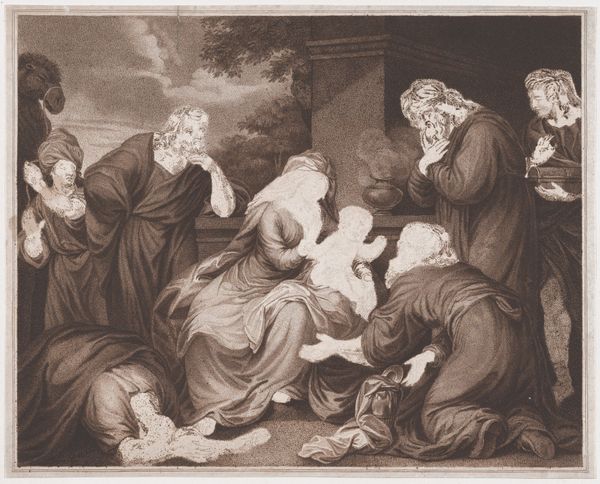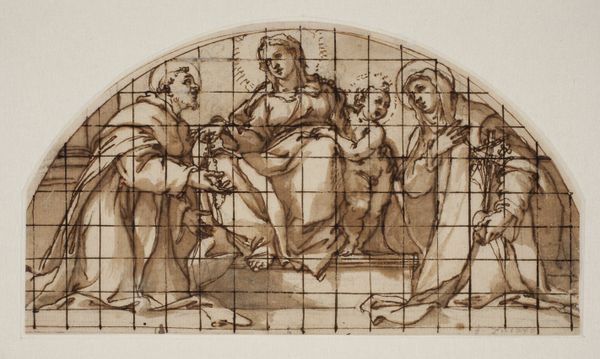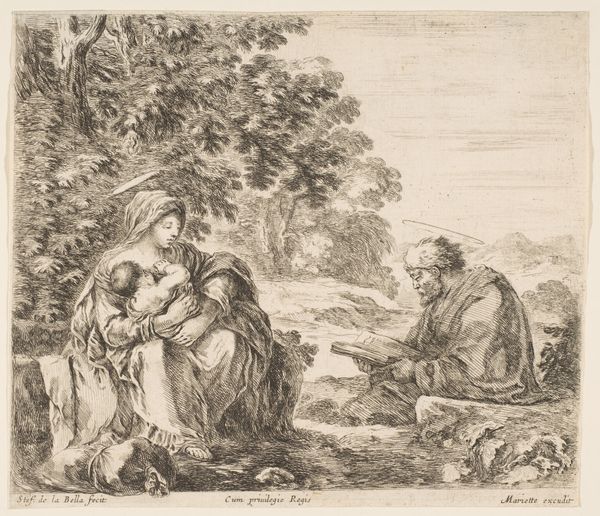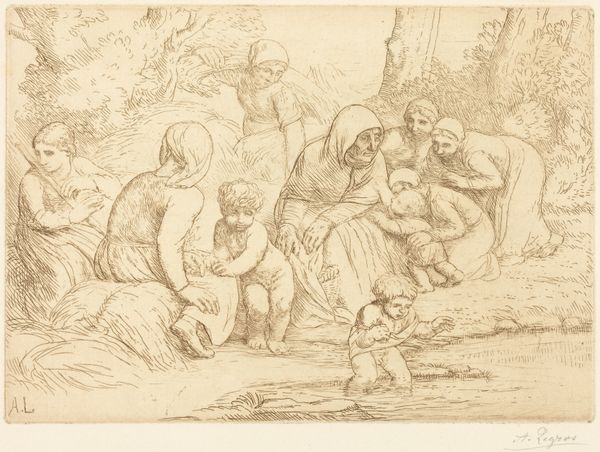
The People of Jerusalem in Exile c. 1832
0:00
0:00
drawing, charcoal
#
drawing
#
landscape
#
charcoal drawing
#
figuration
#
romanticism
#
charcoal
#
history-painting
Dimensions: 28 1/2 x 41 3/4 in. (72.39 x 106.05 cm) (image)
Copyright: Public Domain
Curator: Eduard Bendemann's charcoal drawing, "The People of Jerusalem in Exile," created around 1832, is now part of the Minneapolis Institute of Art's collection. Editor: It’s a striking work. There’s a palpable sense of sorrow emanating from this piece. The figures seem weighted down, not just physically, but emotionally as well. Curator: Absolutely. Bendemann situates this drawing within the historical context of the Babylonian exile. We can examine the power structures at play—a nation displaced, identities challenged, and cultural heritage threatened by dominant forces. Editor: And the imagery! A chained lyre resting on the ground tells a silent story about cultural oppression. The musical instrument, traditionally a symbol of joy and religious expression, lies unused. It communicates a potent absence. The image resonates across history. The forced silencing of a culture—it echoes through time. Curator: Indeed, and even the visual framing directs our reading. Look at the placement of women and children on the periphery of this group; it speaks volumes about gendered experiences of displacement. This positioning encourages conversations about intersectional identity during exile, challenging conventional readings of power. Editor: I agree, and I find the city of Jerusalem faded into the distance a particularly evocative symbol, a physical representation of fading hope. Its position beneath the inscribed text amplifies the overall emotional impact, wouldn’t you say? Curator: Precisely. This art allows a lens to focus not merely on the singular experience but to reflect the collective, multi-faceted realities of the exiled. Editor: This piece serves as a reminder that art is a time capsule of cultural memory. These carefully rendered images, layered with symbols, convey not just the historical moment, but its continuing psychological impact. Curator: And hopefully, through explorations such as this, these narratives not only connect to the past but ignite conversation around present day implications concerning social and cultural marginalization. Editor: Yes, may we always heed such echoes, seeking harmony in the face of displacement and understanding amidst fractured narratives.
Comments
No comments
Be the first to comment and join the conversation on the ultimate creative platform.
